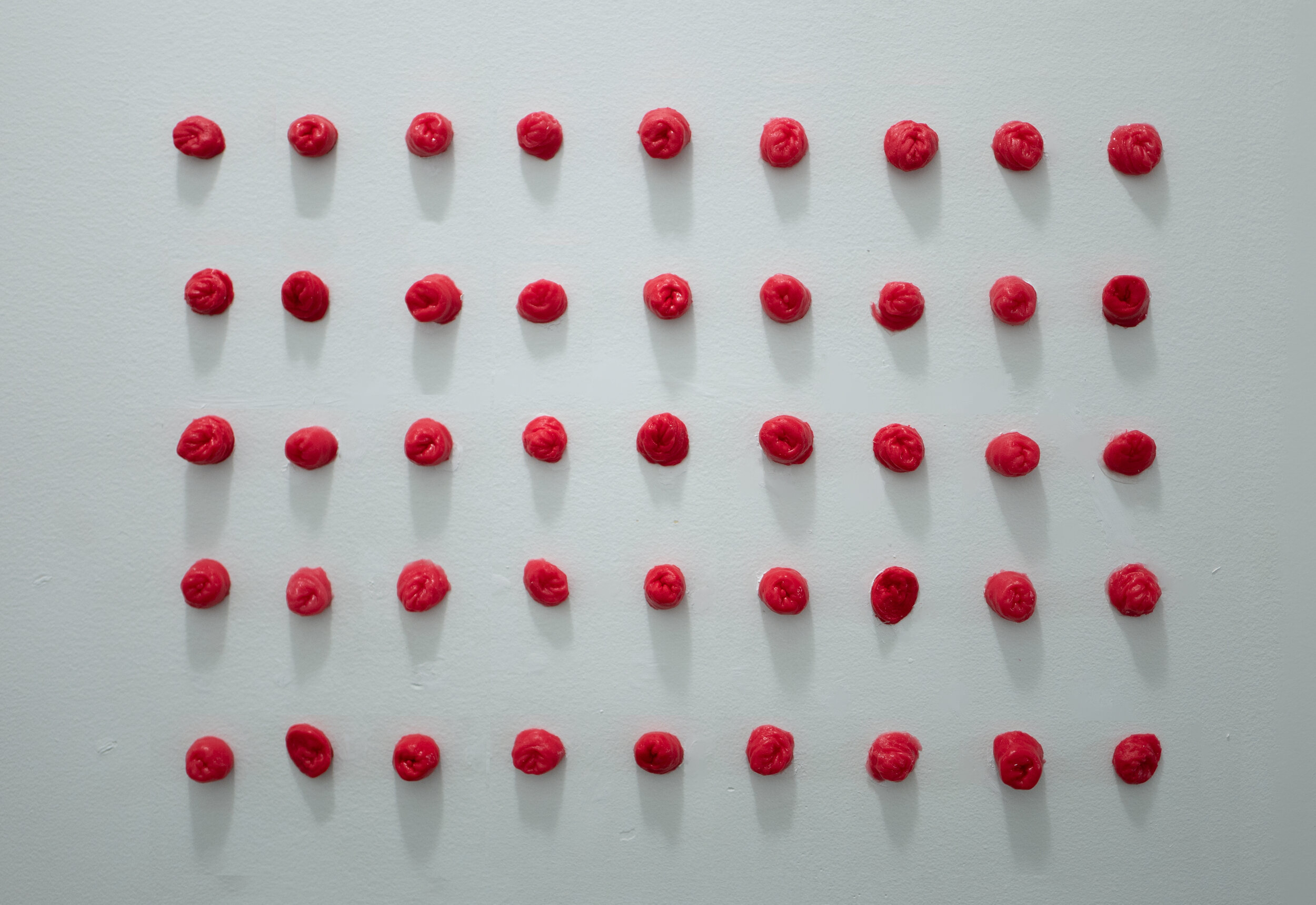
Various Forms (2020)
With this piece, I decided to further my exploration of my stoma – particularly the notion that it is a body in its own right. Not many people are able to see and interact with their intestine on a daily basis. I have this privilege. An ileostomy, the end of the small intestine which has been brought outside, feels completely foreign. It is unconsciously controlled by the brain. It moves at its own will, constantly squirming and changing shape. It is simultaneously a part of your body and one entirely on its own. It makes one aware of how little knowledge we have of the ways our bodies function. Few people have stomas, but all humans have intestines. By exploring the stoma, viewers can envisage what their own bodies hold inside. To the viewer, these models may seem strange, foreign, or unsettling. How is it that the organs – which we’ve had since birth – are so alien when they become visible?
In creating this piece, I took ten separate alginate impressions of my stoma. Using those, I cast forty-five silicone rubber models. This material recreates the detailed form of the intestine, while providing a similar texture and feel. I strived for the most realistic models possible. The more accurate the representation is, the stranger they become. The intention with this installation is to have viewers interact with the stomas to experience how the intestine feels. The models in this work are installed in a grid formation. No matter how precisely laid out, the grid will never be perfectly aligned. The slight flaws in the grid highlight the different forms and sizes the stoma can contort itself into – it isn’t static, but rather constantly changing. The grid also acts as an attempt to control the uncontrollable – it will never quite work.
* Stoma: an artificial opening made into a hollow organ, especially one on the surface of the body leading to the gut or trachea.
Ileostomy: a surgical operation in which a damaged part is removed from the ileum and the cut end diverted to an artificial opening in the abdominal wall.


